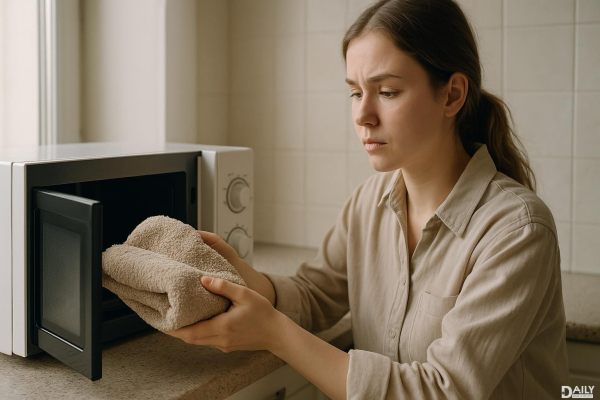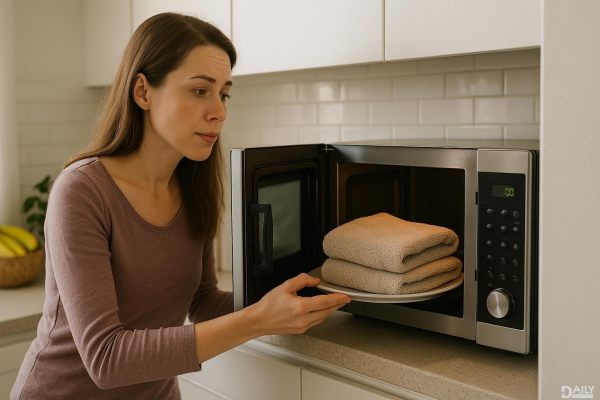Microwaving a towel can be safe—if you do it right. But before you toss that damp hand towel in for a quick warm-up, there are a few key things to keep in mind to avoid turning your cozy moment into a fire hazard or a bacterial breeding ground. Let’s break it down so you can enjoy that toasty towel without any nasty surprises.

When you microwave a towel, the water molecules inside it absorb the microwave’s energy and vibrate, generating heat. That’s why a damp towel warms up faster than a dry one. But here’s the catch: if the towel gets too hot or stays in too long, the heat can build up to the point where it could ignite. Cotton, in particular, is highly flammable when dry, so a towel that’s mostly dry but has a few damp spots can become a fire risk if microwaved for too long. Always make sure your towel is evenly damp—not soaking wet, not bone dry—before nuking it.
First, dampen the towel evenly—think wrung-out, not dripping. Fold it loosely (no tight bundles) to allow steam to escape, and place it on a microwave-safe plate. Start with short bursts (15-30 seconds) and check the temperature between intervals. If it’s steaming hot but not scorching, you’re good. Avoid overheating: two minutes is usually the max, but times vary based on microwave wattage. And never walk away while it’s running—microwaved towels can overheat fast.
Warm towels aren’t just a spa luxury; they have practical uses too. A microwaved towel can soothe sore muscles, ease sinus pressure when draped over your face, or even act as a DIY heating pad for cramps. Some parents use warmed towels to comfort babies during diaper changes or bath time (always test the temperature first!). Just remember: if you’re using it for therapeutic purposes, keep it warm, not scalding.
Here’s the ick factor: damp towels are a playground for bacteria, and microwaving won’t necessarily sterilize them. While heat can kill some germs, it’s not a foolproof disinfectant unless the towel reaches boiling temperatures for several minutes—which isn’t practical (or safe) in a home microwave. If you’re microwaving a towel for hygiene purposes (like a makeshift sterilized cloth), it’s better to wash it in hot water first, then microwave it damp for a short burst to warm it up.
Never microwave a towel with metal threads or embellishments (sparks = bad news). Avoid synthetic fabrics like polyester, which can melt or release fumes. Don’t stack multiple towels—heat distribution gets uneven, increasing fire risks. And skip the dryer sheet scent boosters; they can react unpredictably to microwave heat. Stick to plain cotton or bamboo towels for the safest results.
If you’re wary of microwaving, try a steamer or soak the towel in hot water (then wring it out) for similar warmth. Electric heating pads are a more controlled option for pain relief, and a dryer on high heat can warm towels safely (though less instantly). For sterilization, a UV sanitizing bag or boiling water soak is more reliable than microwaving.
So, can you microwave a towel? Absolutely—just treat it like a science experiment, not a set-it-and-forget-it snack. Keep it damp, keep it brief, and always keep an eye on it. That way, you get the warmth without the worry.
























